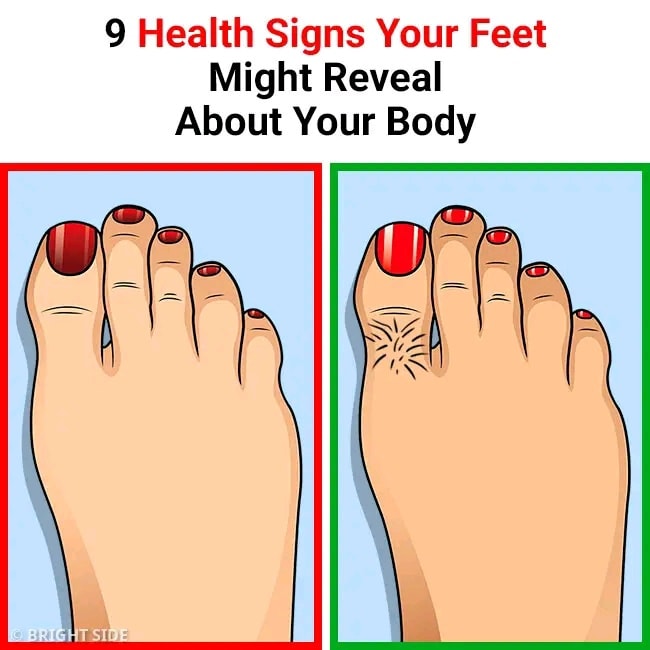9 Health Signs Your Feet Might Reveal About Your Body

Your feet carry you all day—but they also hold clues about your internal health. From circulation issues to organ troubles, here are 9 signs your feet might be trying to tell you something serious.
1. Cold Feet All the Time
Constantly icy feet might mean poor blood circulation or thyroid issues. It’s also a common symptom of diabetes or anemia. If socks don’t help, get it checked.
2. Swollen Feet or Ankles
Swelling could be due to standing too long, but chronic puffiness might signal kidney, liver, or heart problems. It can also point to poor lymphatic drainage.
3. Numbness or Tingling
If your feet often feel “asleep,” it could be a sign of nerve damage (neuropathy), especially in diabetics. It might also mean a pinched nerve in your back or a vitamin B12 deficiency.
4. Yellow Toenails or Thickened Nails
Besides fungal infections, thick yellow nails could indicate lung disease or poor circulation. If the nail shape changes or thickens with no reason, consult a doctor.
5. Sores That Don’t Heal
Wounds or blisters that stay open can point to diabetes or immune system issues. This is a red flag for poor circulation and low healing capacity.
6. Cracked Heels and Dry Skin
Minor dryness is common, but deep cracks may signal thyroid dysfunction or vitamin deficiency (like omega-3 or vitamin E). Also linked to dehydration.
7. Foot Cramps Often
Frequent cramps can mean low magnesium, potassium, or calcium. It may also be caused by dehydration or poor blood flow to the feet.
8. Clubbed Toes (Round and Bulbous)
This might indicate low oxygen levels in the blood and can be associated with lung disease, heart problems, or digestive issues.
9. Dark Lines Under the Toenails
Thin black or brown streaks may be harmless or signs of trauma. But if they appear suddenly without injury, they could indicate melanoma, a serious form of skin cancer.
Final Note
Don’t ignore what your feet are trying to say. They’re not just for walking—they’re your body’s early warning system. If you notice persistent changes, pain, or discomfort, it’s time to consult a healthcare provider. Prevention starts at the bottom!











